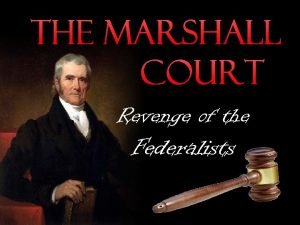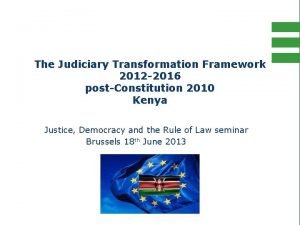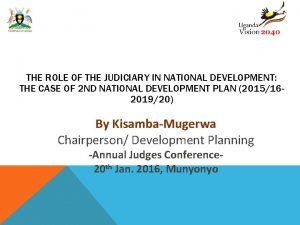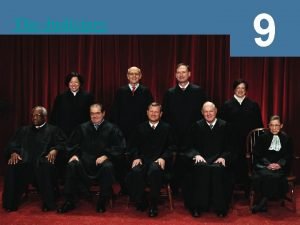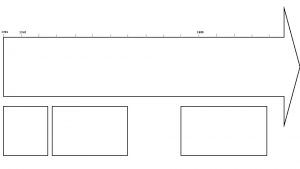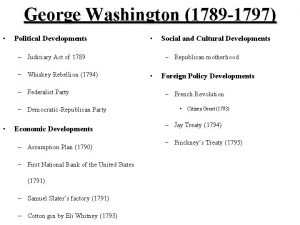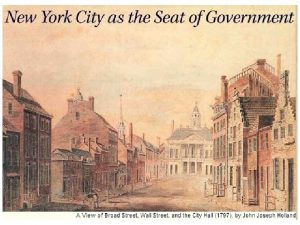The Judiciary Act of 1789 and the Creation









- Slides: 9

The Judiciary Act of 1789 and the Creation of the Federal Judicial System • Established the basic three-tiered structure of the federal court system – District courts: at least one in each state, each staffed by a federal judge. – Circuit Court: avenue for appeal. • Each circuit court initially composed of one district court judge and two itinerant Supreme Court Justices who met as a circuit court twice a year – Supreme Court size set in the Act – chief justice and five associates • Number of justices set to 9 in 1869.

The Early Court • First session of the Supreme Court initially had to be adjourned when a quorum of the justices failed to show up. • Later, the court decided only one major case. • Relatively lowly status – One associate judge left to become chief justice of a state supreme court.

The Early Court • First decade, Court not co-equal but it did assert itself. – Declined to give President Washington advice on the legality of some of his actions • Attempted to establish the Court as an independent, nonpolitical branch – Tried to advance principles of nationalism and to maintain the national government’s supremacy over the states – Began to pave the way for announcement of the doctrine of judicial review

The Marshall Court: Marbury v. Madison (1803) and Judicial Review • Marbury v. Madison – Supreme Court first asserted the power of judicial review in finding that the congressional statute extending the Court’s original jurisdiction was unconstitutional. – Marshall claimed this sweeping authority for the Court by asserting that the right of judicial review was a power that could be implied from the Constitution’s supremacy clause. – The immediate effect was to deny power to the Court. The long term effect was to establish the power of judicial review.

Do not mess with John Marshall Chief Justice 1801 - 1835

Roger Taney – Chief Justice 1836 -1864

Earl Warren 1953 -1969

Warren Burger 1969 -1986

William Rehnquist 1986 -2005
